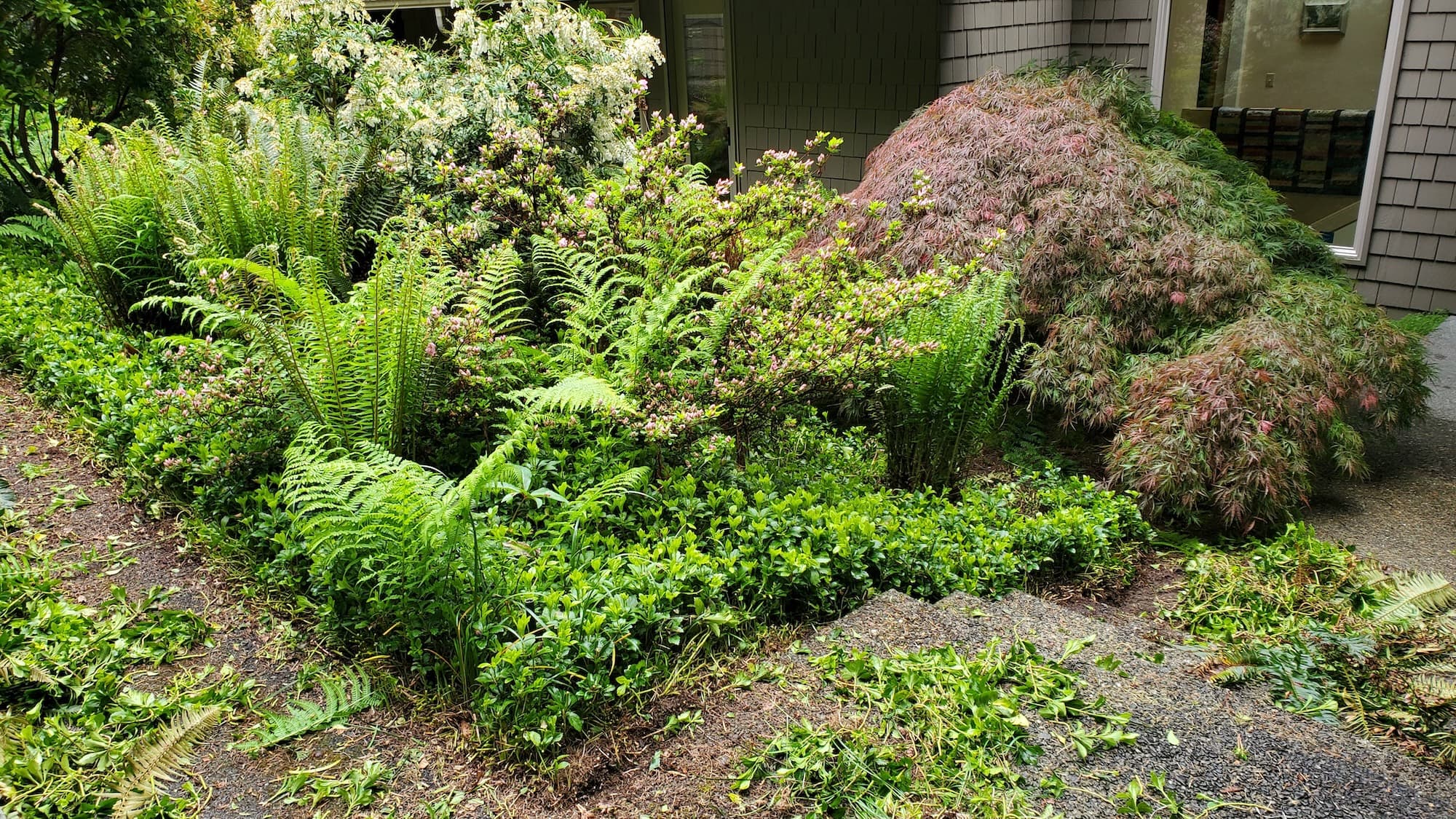West Seattle Remove Diseased Branches
Homeowner’s Issue
West Seattle yards deal with a specific set of pressures: heavy winter rain, shady pockets under mature evergreens, and pockets of compacted fill and glacially deposited soils on slopes toward Alki and Harbor Avenue. Trees along the bluff and exposed ridges see wind and salt spray, while inland lots near the Junction and Arbor Heights get deep shade and year-round moss. These conditions make fungal infections, root rot, and limb dieback more common than in drier neighborhoods.
Many homeowners don’t notice early dieback because understory shrubs and ivy hide dead wood until a limb fails. Compacted soils and poor drainage slow wound closure and increase secondary pest pressure. HOAs in condominiums and tighter subdivisions are strict about branch clearance, sightlines, and sidewalk hazards, so timely pruning matters for safety and compliance. Invasive vines and blackberry thickets that are common around Fauntleroy can mask diseased scaffolds, turning a small pruning job into a larger sanitation cut. Our approach considers West Seattle microclimates, slope stability, and the city’s wet season timing so pruning promotes long-term tree health, not quick cosmetic fixes.
Our Quality Service
We diagnose, prune, and remove diseased limbs using sustainable methods only — no herbicides. Work is done with hand pruners, loppers, pole saws, and, when required, rigging for safe branch lowering. For larger trees we coordinate certified arborist assistance, aerial lift rental, or safe climbing techniques. Typical small- to medium-yard jobs take 2–6 hours; larger or multi-tree projects are quoted with a clear turnaround (often within 1–2 weeks for estimated jobs).
Local insight: we prune after heavy winter rain subsides but before late-spring leaf-out when wounds close fastest. On windy bluff properties we focus on structural cuts and crown reduction to reduce sail effect. We recommend mulch rings and targeted soil improvements to help wounds heal and reduce repeat infections. Benefits: improved safety, clearer sightlines for streets/sidewalks, reduced risk of property damage, better curb appeal, and lower long-term maintenance.
What’s Included
- Onsite assessment and written recommendations.
- Pruning of diseased, dead, and hazardous branches to ANSI/ISA best practices.
- Sanitation cuts and removal of major infection sources (safely cut and cleaned tools between trees).
- Onsite cleanup: chip on-site where possible or haul-away.
- Final inspection and aftercare notes.
Options / Upgrades
- Mulch + landscape fabric installation (spot application).
- Organic disease-mitigation soil amendments and compost top-dressing.
- Moss and ivy control using manual removal and mulching (no herbicides).
- Green-bin compliant haul-away vs. full debris removal to landfill.
- Follow-up seasonal inspections (spring/fall).
Before & After / Expectations
Expect some noise and wood debris during the job; we tarp and protect plantings and hardscapes. Tight access or steep slopes in West Seattle can increase time and require rigging—those details are in the estimate. Small jobs are often same-week; larger, multi-tree removals may require scheduling with an arborist and take 1–2 weeks to book.
Aftercare tips for West Seattle:
- Water newly exposed root zones during summer dry spells (May–Sept) for the first two seasons.
- Watch for sucker growth in the first 6–12 months and remove early.
- Expect increased weed/moss pressure where canopy opens—apply organic mulch to suppress weeds and retain moisture.
- Avoid heavy pruning in late fall; late winter/early spring is best here.
FAQs
Q: When is the best time to prune in West Seattle?
A: Late winter to early spring before leaf-out, after major rains subside, for best wound closure and inspection visibility.Q: Do you use herbicides for diseased wood or invasive vines?
A: No. We use mechanical removal, mulching, and organic amendments only.Q: How long will the site be messy?
A: Cleanup is completed same day for most jobs. Larger removals may leave a wood pile or chips temporarily until hauled away.Q: Will pruning harm my tree?
A: Proper cuts improve tree health. We follow best practices to minimize stress and promote recovery.
Call to Action
West Seattle homeowners: book a free estimate and stop risking falling limbs or spreading disease. We schedule quick inspections across Alki, Fauntleroy, Arbor Heights, and the Junction. Trusted local crew, sustainable methods, clear quotes.
Email: neatandtidyseattle@gmail.com
Phone: 206-538-9344
Ready for a safer yard? Get on the schedule this week.










